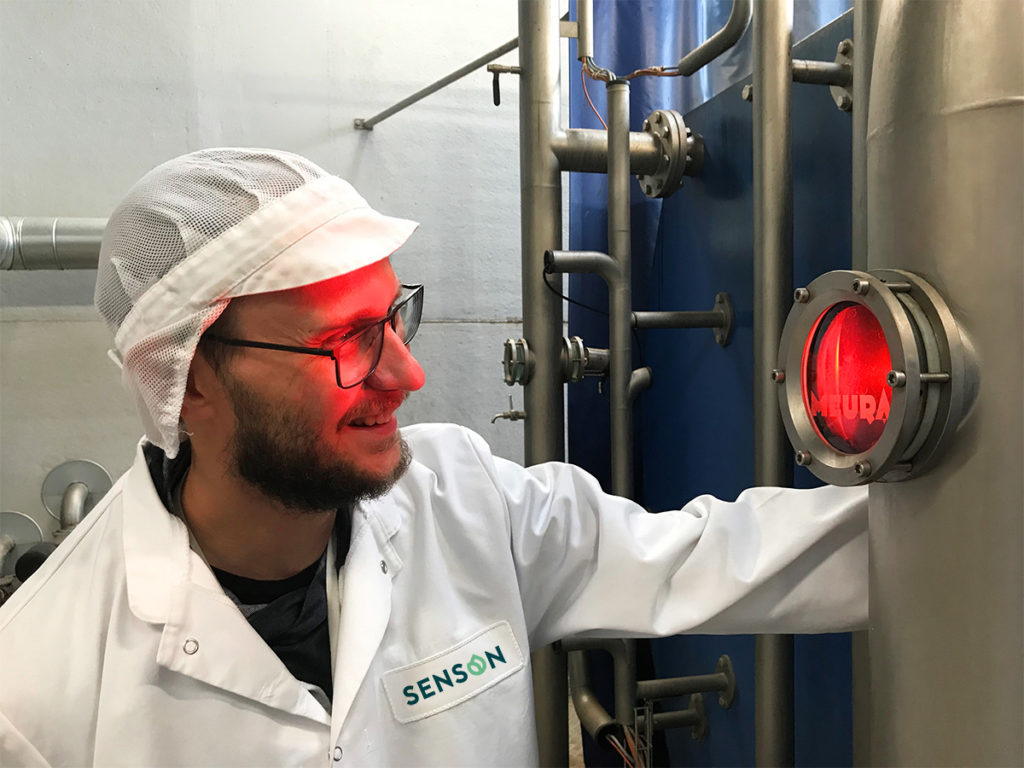When doing your grocery shopping and comparing products, have you ever thought what the labels actually tell? In fact, the labels give only a glimpse of what the product has to hold. You see an appealing marketing message accompanied with figures, abbreviations and symbols. What the information on the label cannot fully deliver, is all the work for food product safety done by the quality and R&D specialists.
Aiming at higher safety standards
The certifications ISO 9001 and ISO 14001 as well as the FSSC 2200 and ISO 22000 for food safety are part of the daily work of Sakari Nieminen, Quality and Environmental Manager at Senson. Complying with all these certifications requires also balancing in certain factors, for example, water usage: how keep the process equipment clean but retain water usage on acceptable level at the same time.
Although keeping the environmental requisites of ISO 14001 in mind, the FSSC 22000 is one of the most essential tasks on Nieminen’s desk. Senson was FSSC certified in 2014.
– Naturally, there are the absolute requirements from EU and national legislation we follow, but the Food Safety System Certification pursues higher standards.
This year, the slogan of the global World Food Safety Day was ”Safer food, better health”. By this Foundation FSSC and WHO wish to remind that we all play a role in keeping food safe, and not only the specialists in consumer goods industry. At the end of the day, the consumer makes the final decision whether to trust the product (and producer) or to leave it onto the shelf.
In addition to the regular quality audits, Senson’s customers make also their own audits and pay visits to production facilities. As a continuous review, Senson performs a raw material traceability test every year.
Finding risks to control them
For the producer, the backbone of food safety assurance – as described by Nieminen – are the HACCP (hazard analysis and critical control point) techniques. In order to control the risks and possible hazards in raw materials or production process, they need first to be identified. And in order to proactively prevent them, procedures for monitoring and verifying them need to be established.
– At Senson, this means ensuring high-quality and safe raw materials, and for example performing heat treatments and quality checks systematically during the production process. And if we say our products are gluten-free, we need to guarantee they really are, and are safe for celiac patients. Zero tolerance requires, for example, making consistent laboratory tests, Nieminen sums up.
Having Viking Malt as the raw material supplier offers a clear advantage for Senson. Ensuring raw material quality is a bit easier, when you have as close co-operation as this. Not to mention the traceability, which is also one of the legislative requirements.
What next?
Although it seems plenty has already been done to improve food safety, there is still land to plow. When asked, Nieminen takes a look at his crystal ball and predicts that allergen levels and contaminants in food products could be under the microscope in the near future. Also, food crime threats food safety. Not an issue you first think of when deciding whether to buy domestic or imported goods, is it?
Think about all these aspects and factors in food safety. Then imagine reading all that info on a product label. Oh dear what a label that would be…


